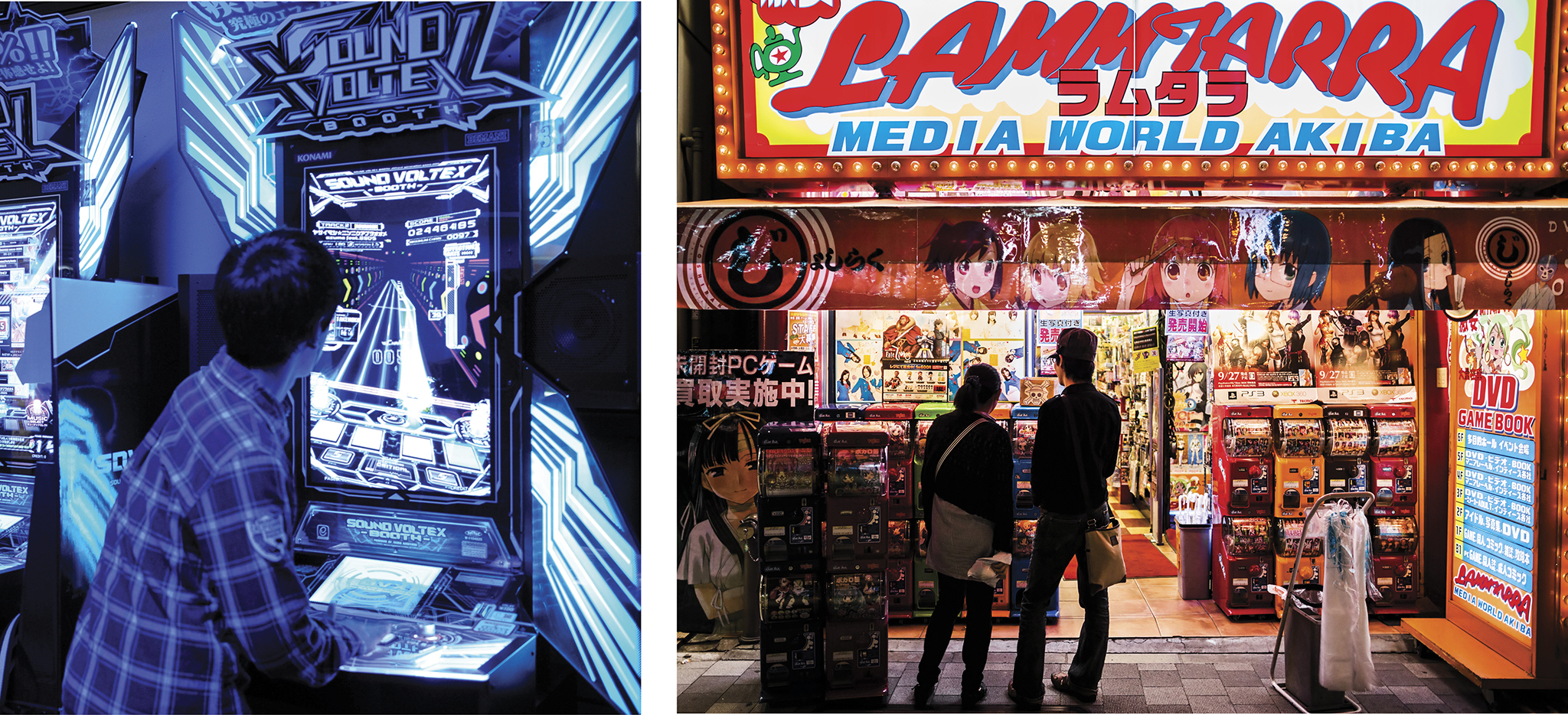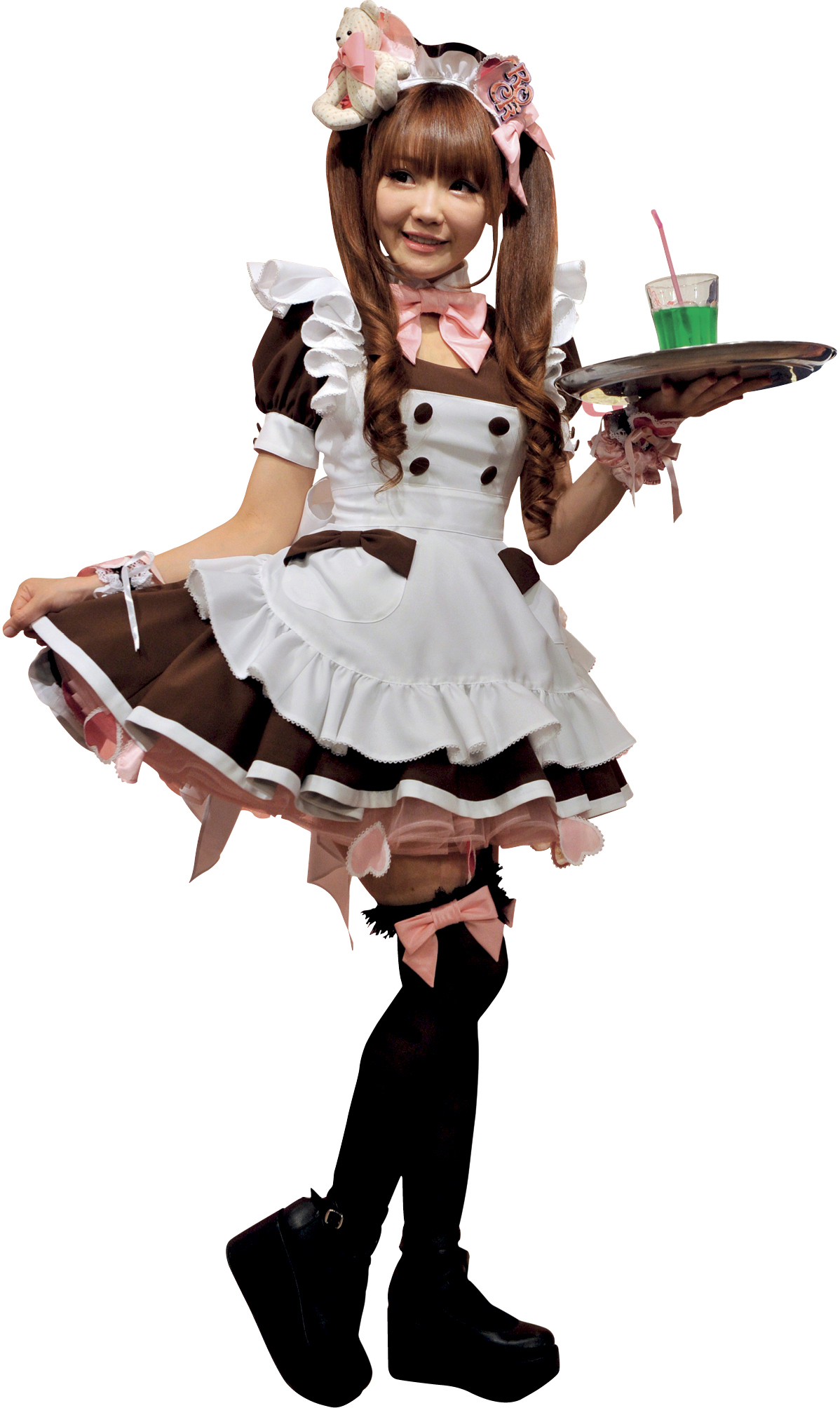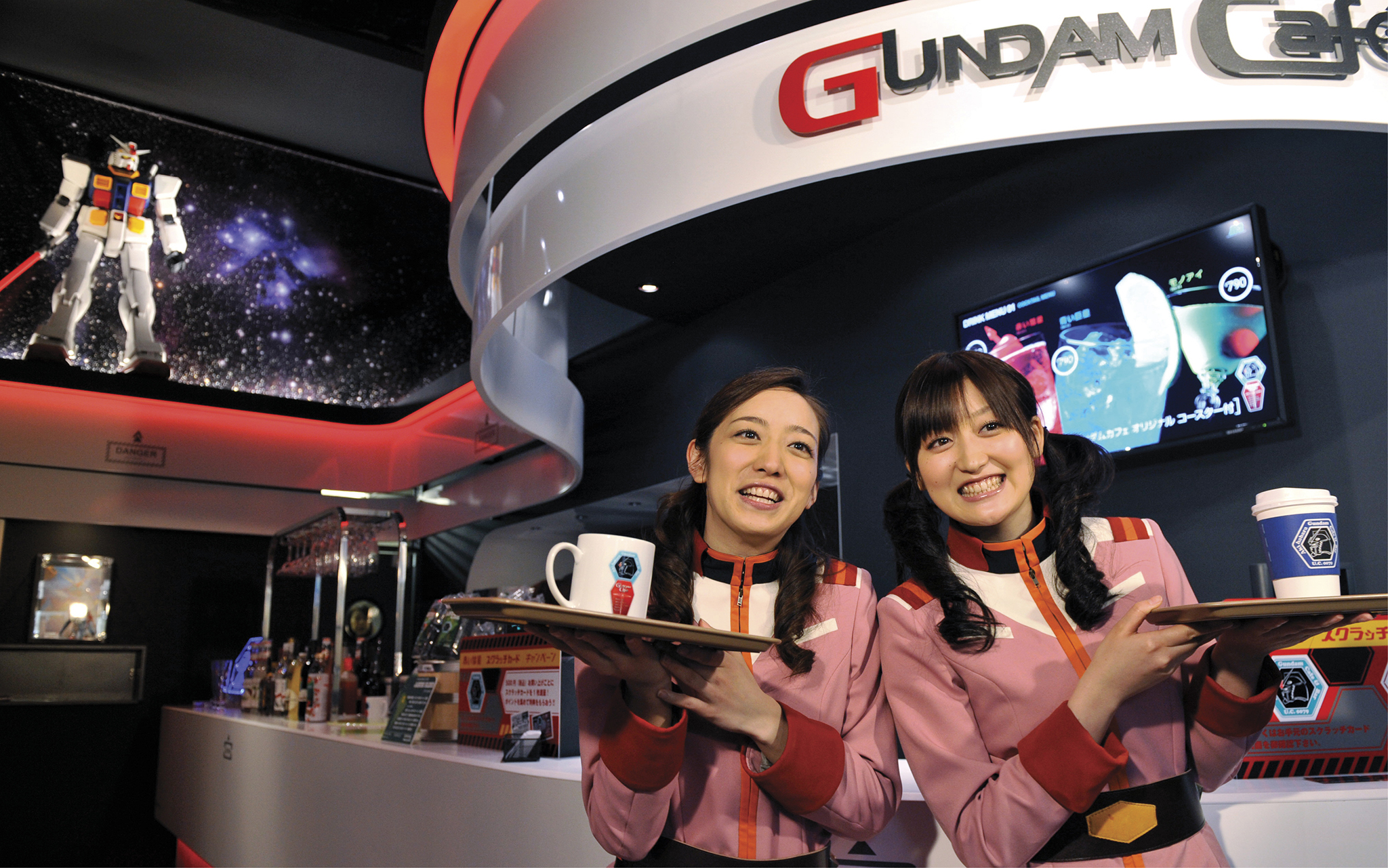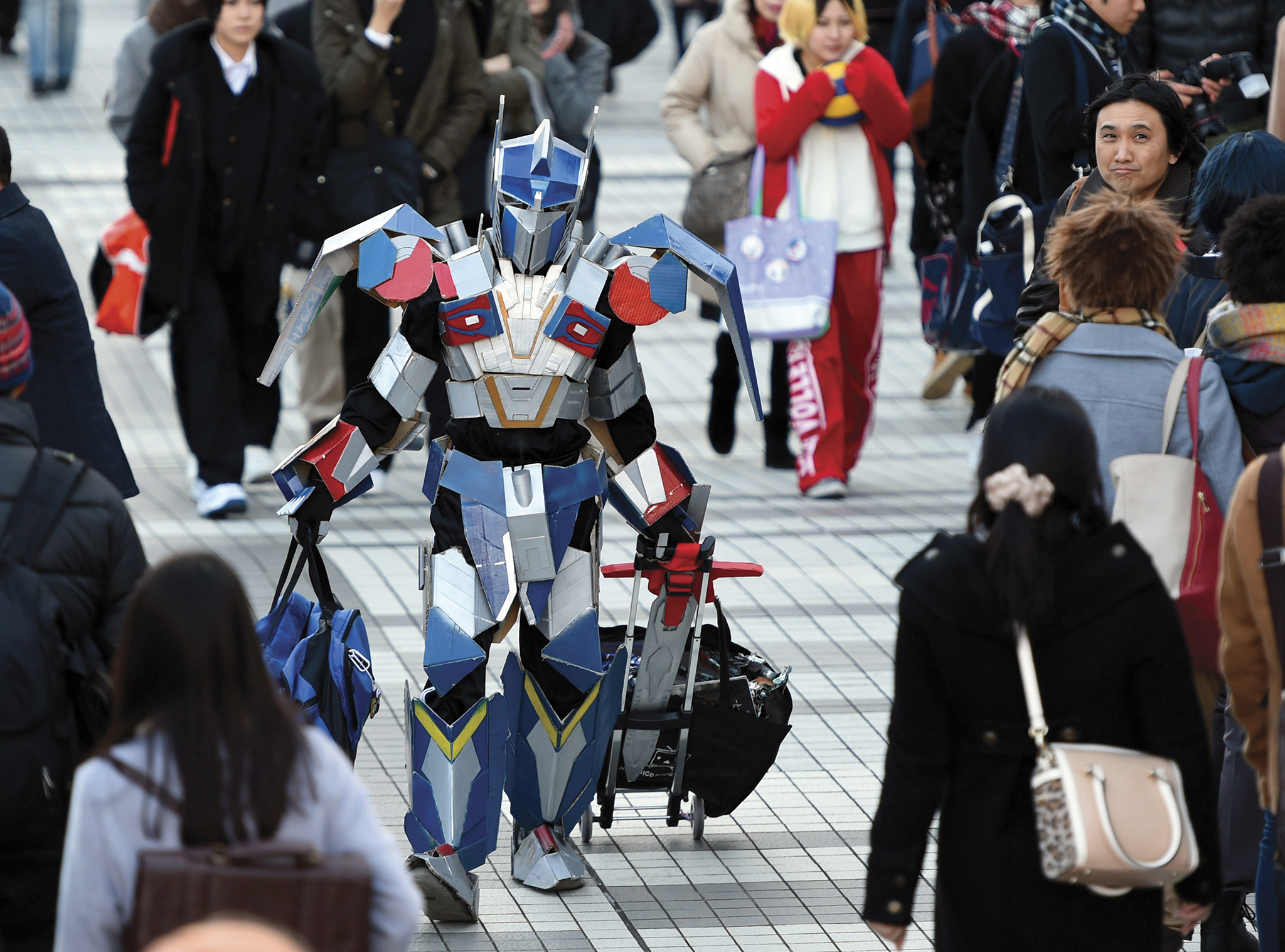日本のオタク
Otaku Japan
A celebration of geekery

D Left to right: Arcades such as Club Sega and Taito Station can be found across Japan; Tokyo’s Akihabara district is a hot spot for arcades and all things otaku.
Japan’s small but passionate otaku (geek) subculture has been gaining momentum around the world since the 1990s, when anime (cartoons) started to become more famous and accessible overseas. For the new generations of people growing up on a steady diet of Japanese video games, anime, and manga (comics), it’s a dream to make a pilgrimage to Japan, where shops, restaurants, and attractions created just for otaku customers have become the fabric of whole districts.
Defining Otaku
When the term “otaku” was coined by essayist Akio Nakamori in 1983, it was used in a disparaging way to define all those people who were obsessed with something that was otherwise considered fairly geeky and immature: be it manga, dolls, or video games. This negative view endured for many decades, and while geek culture has become more acceptable in the 21st century, many Japanese people still have mixed feelings on this subject—and otaku often prefer to keep their hobbies to themselves. Foreign fans, on the other hand, have wholeheartedly adopted the term, and the title of otaku is a badge of honor that they proudly use to declare themselves a die-hard fanatic of their particular passion.
Arcade Culture

A Maid CafÉ SERVER
Arcades, known as game centers in Japan, used to be a worldwide staple. Now the scene seems to exist solely on the set of 1980s films, replaced by home consoles, PC software, and portable devices. Except, that is, in Japan, where arcades continue to thrive, thanks to the owners’ commitment to creating a unique experience that can’t be duplicated anywhere else.
The venues differ in size, but their basic layout is about the same. The first floor is crammed with fun games and crane machines, which are more likely to attract casual passersby, young couples, and families. The upper floors feature perennial favorites like shooting, fighting, and music games—and this is where you can go to play alongside the hardcore gamers of otaku-level expertise. The last floor is usually devoted to purikura photo-sticker booths, which are a must on any outing with friends.
The key to the arcades’ continued success is innovation, and the latest trend is represented by virtual reality (VR). Most VR game centers are concentrated in Tokyo and require visitors to have at least some Japanese language ability—or you can just wing it and enjoy the experience.
Escape reality in a Themed CafÉ
The first maid café was a temporary pop-up in 1998, but a permanent site opened in Tokyo’s Akihabara district in 2001. Themed cafés in otaku-centric areas have since become a standard, as they’re the perfect place for customers who enjoy escaping into their favorite hobbies. Some places are devoted to a particular franchise, while others—such as the Animate Cafés (with 25 branches around Japan)—change their theme every month or so, focusing on a different anime every time. Both groups offer a themed menu and sell time-limited merchandise.

D The Gundam Café in Tokyo’s Akihabra district celebrates one of Japan’s long-running and hugely popular mecha (giant robot) franchises.
The Convention Calendar
Otaku of all kinds have exciting events and conventions to look forward to throughout the year, where they can hear news about their hobbies, buy new products, and meet up with friends. Embrace your geeky hobbies by joining the crowds of eager otaku at one of these events—it can be a great place to meet like-minded fans, especially since some of these events draw over 100,000 attendees.
At BitSummit (June) and Tokyo Game Show (September), you can try out the latest innovations in gaming and hear all about new installments of your favorite video game franchises. Jump Festa (December) focuses instead on the manga content of best-selling Shonen Jump magazine. Among more niche events, the Dolls Party (May) and I Doll (events throughout the year) attract thousands of fans of Dollfie and Pullip, two popular doll brands.

D New virtual reality equipment and games are often on display at Tokyo Game Show.
The Dojin Market
Collecting official merchandise is important for many otaku, but there’s also a huge demand for fan-made products based on popular manga and anime. These dojin (independent) goods may take the form of novels or video games, but the biggest sellers are comics (dojinshi). The creators are often avid fans of a series who make dojinshi as a hobby, though some are aspiring manga authors or artists. As the products use copyrighted stories and characters, dojin goods are technically illegal. Surprisingly, though, the official publishers tend to look the other way; for the manga industry, in particular, it’s a win-win situation as the dojin community is a hotbed for talent and helps fuel fans’ interest in new series.

D Many fans bring suitcases to Comiket to hold all the merchandise they buy at the event.
Otaku districts often have chain stores (such as Mandarake and K-Books) dedicated exclusively to dojin goods. You can also explore the world of the dojin community at Comiket (usually August and September), a hugely popular independent comics event held twice a year in Tokyo.
dress to impress
Dressing up as your favorite fictional character isn’t a uniquely Japanese concept, and has been part of geek fandoms since the mid-20th century. But this hobby has been inextricably tied up with the otaku community since fans began donning costumes for the first Comiket events in the 1970s. The word “cosplay” (a portmanteau of “costume” and “play”) was coined in 1983 by writer Nobuyuki Takahashi, and is now a common word used by geek and otaku communities around the world. You may find a few shops selling costumes, wigs, and other accessories in Japan, but hardcore cosplayers make their own costumes, whether it’s a simple school uniform or a full-on suit of armor.
Many otaku-centric conventions such as Comiket have a cosplay area where people can meet and take photos, and every month there are a few dedicated cosplay events around the country. Surprisingly, the two most important annual cosplay gatherings aren’t held in the otaku districts of Tokyo. One is Osaka’s Nipponbashi Street Festa (March), featuring a 1,000- strong parade of colorful cosplayers. The other is the World Cosplay Summit held at the end of July in Nagoya (Aichi Prefecture), uniting passionate otaku from around the world for a vibrant celebration of cosplay culture.

D Japanese anime, manga and video games are common inspirations for cosplay, but you’ll also likely see Western creations such as Disney characters and Marvel superheroes.
